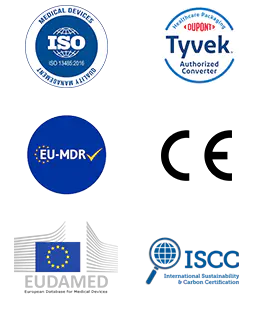Content
- 1 What Are Steam Indicator Strips and How Do They Work?
- 2 Why Are Steam Indicator Strips Important?
- 3 Types of Steam Indicator Strips Tape and Their Classifications
- 4 Applications of Steam Indicator Strips in Different Industries
- 5 Steam Indicator Strips vs. Biological Indicators
- 6 Steam Indicator Tape vs. Chemical Indicators: Which One to Use?
- 7 Class 4 vs. Class 5 Steam Indicators: What's the Difference?
- 8 Key Differences Between Class 4 and Class 5 Steam Indicators
- 9 How to Choose the Right Steam Indicator Strip for Your Sterilization Process
- 10 How to Use Steam Indicator Tape in Autoclaves Properly
- 11 How to Read Steam Indicator Strip Color Changes Accurately
What Are Steam Indicator Strips and How Do They Work?
Steam indicator strips are essential tools used to confirm that sterilization processes, particularly steam sterilization, have been performed correctly. They are widely used in industries like healthcare, laboratories, and food processing to ensure that critical items have been exposed to the appropriate sterilization conditions.
What Are Steam Indicator Strips?
Steam indicator strips are small, adhesive-backed strips or tapes that contain chemical indicators that change color when exposed to specific conditions such as temperature, pressure, and steam. These strips are placed inside sterilization pouches or directly on the items being sterilized to monitor the effectiveness of the steam sterilization process.
Typically, steam indicator strips feature a color change from blue to black or purple to green, depending on the class of the indicator. This color change signals that the pre-determined sterilization conditions (such as temperature and time) have been met, confirming that the process was successful.
How Do Steam Indicator Strips Work?
The function of steam indicator strips relies on a chemical reaction. The strips are coated with sensitive chemicals that react when exposed to specific sterilization parameters, such as:
Temperature: Most strips are designed to respond to temperatures typically found in autoclaves (e.g., 121°C or 134°C).
Time: The indicators are designed to show that the material has been exposed to the sterilization conditions for the correct duration.
Steam: The presence of moisture (steam) is a key factor in the effectiveness of the sterilization process.
When these conditions are met during the sterilization cycle, the chemical substances on the strip undergo a color change, which indicates that the sterilization process has been completed successfully.
Why Are Steam Indicator Strips Important?
Ensuring Sterilization Accuracy:
Steam indicator strips provide a visual confirmation that sterilization conditions were reached, helping prevent contamination of sensitive materials like medical instruments or pharmaceutical products.
Non-invasive Monitoring:
Unlike biological indicators, which require incubation and further testing, steam indicator strips offer an immediate and non-invasive way to monitor sterilization effectiveness.
Compliance and Traceability:
Many industries are required to meet strict standards for sterilization. Using steam indicator strips ensures compliance with regulations and provides documentation of the sterilization process, which is essential for audits or inspections.
Cost-Effective and Easy to Use:
Steam indicator strips are affordable, easy to use, and don‘t require specialized equipment to read, making them an efficient solution for monitoring sterilization across various sectors.
Types of Steam Indicator Strips Tape and Their Classifications
Steam indicator strips come in a variety of types, each designed to meet specific sterilization requirements and protocols. These strips are classified based on the level of sterilization verification they offer, the conditions under which they are effective, and the intended application. Understanding the different types and classifications helps ensure the correct choice for various sterilization processes.
1. Class 1 Steam Indicator Strips (Process Indicators)
Class 1 steam indicator strips are the most basic type of indicator. These strips only verify that the item has been exposed to a certain temperature for a predetermined amount of time. The color change on these strips is typically blue to black and occurs when specific conditions, like temperature and time, have been met. Class 1 indicators are generally used for routine monitoring and are often placed on sterilization pouches or packages.
Common Features:
Basic temperature-time exposure check
Simple color change (e.g., blue to black)
Used for confirming sterilization exposure, not effectiveness
2. Class 4 Steam Indicator Strips (Multi-Parameter Indicators)
Class 4 steam indicator strips are more advanced, as they assess multiple parameters in the sterilization process. These indicators check for a combination of temperature, time, and steam presence. Class 4 strips provide more detailed verification of the sterilization process compared to Class 1 indicators, ensuring that the conditions for effective sterilization are met. For example, the indicator will only change color if the correct combination of temperature, time, and steam exposure occurs, which makes them more reliable than Class 1 strips.
Common Features:
Multiple parameters (temperature, time, and steam presence) are considered
More reliable than Class 1 for confirming sterilization
Color change can vary (e.g., purple to green)
3. Class 5 Steam Indicator Strips (Integrators)
Class 5 steam indicator strips, also known as integrators, are the most precise indicators available. They provide the most comprehensive confirmation that a sterilization cycle has been performed correctly. Class 5 indicators measure the entire sterilization process, including the duration of exposure to steam, and they integrate the temperature, time, and steam parameters over the entire cycle. These strips are often used when exact compliance with sterilization protocols is critical, such as in pharmaceutical manufacturing and hospital sterilization environments.
Common Features:
Integrates multiple sterilization parameters for a more accurate result
Provides a complete indicator of sterilization success
Color change from blue to black or other distinctive shifts
Often used in high-compliance settings (e.g., healthcare, pharmaceuticals)
4. Class 6 Steam Indicator Strips (Emulator)
Class 6 steam indicator strips are emulator indicators that simulate the conditions of a biological indicator. These strips are designed to emulate the same conditions as biological indicators and are typically used when a more detailed analysis is needed to confirm the adequacy of sterilization. Unlike other classes, Class 6 strips are designed to offer a level of precision similar to biological indicators but without the need for incubation and extended testing periods. They are often used as a backup or supplement to biological indicators.
Common Features:
Emulates biological indicators to simulate exact sterilization conditions
Provides a high level of precision
Used as a supplement to biological indicators
5. Specialty Steam Indicator Strips
In addition to the standard classes, there are also specialty steam indicator strips designed for specific applications or industries. These might include strips for low-temperature sterilization cycles, flash sterilization, or other non-standard sterilization processes. These specialty strips are designed to handle unique conditions where traditional Class 1, 4, or 5 indicators may not suffice.
Common Features:
Designed for specific sterilization processes or conditions
Used in industries with unique sterilization requirements
Specialized for extreme conditions or unique applications
Applications of Steam Indicator Strips in Different Industries
Steam indicator strips play a critical role in ensuring the success and safety of sterilization processes across various industries. These simple yet effective tools provide a reliable method for confirming that sterilization conditions have been met, helping to prevent contamination and ensuring that sterilized items are safe to use. Below are some of the key industries where steam indicator strips are widely used:
1. Healthcare and Medical Industry
In healthcare settings, particularly in hospitals and clinics, sterilization is crucial to preventing the spread of infections and ensuring the safety of medical procedures. Steam indicator strips are commonly used in autoclaves and sterilizers to verify that medical instruments, surgical tools, and other critical items have been effectively sterilized.
Applications:
Monitoring sterilization of surgical instruments and medical devices.
Ensuring that sterilization pouches and wraps have been exposed to the correct conditions.
Verifying sterilization cycles in dental and veterinary clinics.
Benefits:
Guarantees that medical tools are sterile, reducing the risk of cross-contamination.
Helps healthcare facilities comply with safety regulations and standards, such as those set by the FDA and ISO.
2. Pharmaceutical Industry
Sterilization is a crucial step in the pharmaceutical manufacturing process to prevent contamination of drugs and medical products. In this industry, steam indicator strips are used to confirm that sterilization cycles in autoclaves and sterilizers have been completed successfully, ensuring the quality and safety of pharmaceutical products.
Applications:
Sterilizing packaging materials, such as bottles, vials, and containers used for drugs.
Verifying sterilization cycles for equipment and tools used in drug manufacturing.
Ensuring that excipient materials are free from microbial contamination.
Benefits:
Helps ensure pharmaceutical products are safe for public use.
Plays a key role in maintaining Good Manufacturing Practice (GMP) compliance.
3. Food and Beverage Industry
In food production, sterilization is essential for preventing foodborne illnesses and ensuring the safety of consumable products. Steam indicator strips are often used in food sterilization processes, such as canning, bottling, and pasteurization, to confirm that products are properly sterilized before they reach consumers.
Applications:
Monitoring sterilization of food containers, bottles, and jars.
Verifying that food packaging materials are free from pathogens and bacteria.
Ensuring safety in processes like vacuum sealing and packaging for shelf-stable products.
Benefits:
Ensures the sterilization of food products, maintaining their safety and quality.
Helps prevent contamination and spoilage, prolonging shelf life.
4. Laboratories and Research Institutions
In laboratories and research environments, sterilization is essential for maintaining sterile conditions for experiments and ensuring accurate results. Steam indicator strips are often used to monitor the sterilization of laboratory glassware, equipment, and samples, ensuring that all items are free from contaminants before use in experiments.
Applications:
Sterilizing laboratory tools such as petri dishes, test tubes, and glass flasks.
Monitoring autoclave cycles for sterilizing microbiological samples and equipment.
Ensuring the sterility of culture media used in microbial research.
Benefits:
Prevents contamination in sensitive experiments and research.
Helps maintain accuracy and reliability in lab results.
5. Biotechnology and Medical Device Manufacturing
Biotechnology and medical device manufacturing require strict sterilization procedures to ensure the safety and functionality of devices, especially those that come into direct contact with patients. Steam indicator strips are used extensively to ensure that devices are sterilized before they are used in clinical settings.
Applications:
Sterilizing medical implants, prosthetics, and diagnostic devices.
Verifying sterilization of biotechnological research equipment.
Monitoring the sterilization of diagnostic tools like syringes, catheters, and surgical instruments.
Benefits:
Guarantees that medical devices are safe for use in patient care.
Ensures compliance with stringent health and safety regulations.
6. Aerospace and Aviation Industry
In the aerospace industry, sterilization is critical for ensuring that sensitive materials and parts used in aircraft are free from contaminants that could affect safety and performance. Steam indicator strips are used to monitor sterilization processes in the production of aircraft components and parts.
Applications:
Sterilizing materials used in the manufacturing of aircraft parts and components.
Verifying sterilization of tools and equipment used in the aerospace assembly process.
Benefits:
Helps maintain the safety and reliability of aircraft components.
Ensures compliance with aerospace industry standards and regulations.
7. Textile and Garment Industry
In textile and garment manufacturing, especially for medical or food-related apparel, sterilization is necessary to eliminate microbial contamination. Steam indicator strips are used to confirm that fabrics and materials have been properly sterilized during the production process.
Applications:
Sterilizing fabric materials used in medical uniforms, gowns, and face masks.
Ensuring the safety of garments that come into contact with food or healthcare environments.
Benefits:
Prevents microbial contamination in textiles, ensuring safety for users.
Helps maintain high hygiene standards in medical and food-related garments.
Steam Indicator Strips vs. Biological Indicators
Both steam indicator strips and biological indicators are widely used to ensure effective sterilization. However, they differ in their level of detail, speed of results, complexity, and application. Here's a concise overview of the differences:
Steam Indicator Strips provide quick, visual confirmation that sterilization parameters, such as temperature and time, have been met. These strips undergo a color change when exposed to the correct sterilization conditions, providing an immediate indication. They are simple to use, cost-effective, and ideal for routine monitoring, especially in lower-risk applications like food production, dental practices, and basic laboratory environments.
Biological Indicators offer a more detailed and definitive confirmation of sterilization effectiveness. These indicators use live microorganisms, which are resistant to the sterilization process. After being exposed to the sterilization cycle, the biological indicator must be incubated for 24-48 hours. If microbial growth is detected, it means the sterilization process failed to eliminate all pathogens. These indicators are commonly used in high-risk environments, such as hospitals, surgical centers, and pharmaceutical manufacturing, where the safety of patients or products is critical.
| Feature | Steam Indicator Strips | Biological Indicators |
|---|---|---|
| Level of Detail | Quick, visual indication of sterilization parameters | Definitive proof that microorganisms are destroyed |
| Time to Results | Immediate results (color change during/after sterilization) | Results take 24-48 hours after incubation |
| Complexity | Simple and cost-effective, requires no additional steps | Requires incubation and testing, more complex and expensive |
| Application | Ideal for routine monitoring of less critical items | Used in high-risk areas like hospitals and pharmaceutical manufacturing |
| Regulatory Requirements | Not typically required alone for compliance | Often required for regulatory compliance in critical industries |
| Cost | Lower cost, accessible for everyday use | Higher cost due to complex processes and testing |
Steam Indicator Tape vs. Chemical Indicators: Which One to Use?
When it comes to verifying sterilization effectiveness, both steam indicator tape and chemical indicators are widely used, but they each serve distinct purposes and come with their own advantages. Understanding when to use each type is essential for ensuring sterilization processes are effective and compliant with industry standards. Here's a breakdown of these two indicators.
Steam Indicator Tape
Steam indicator tape is commonly used in steam sterilization processes. It is typically applied to the outside of sterilization packs or containers to confirm that the sterilization process conditions, such as temperature and steam exposure, have been met. The tape features a chemical ink that changes color when exposed to the required sterilization parameters.
Usage: Ideal for autoclaving and steam sterilization. It helps quickly identify whether the sterilization chamber has reached the appropriate temperature and pressure.
Functionality: Provides visual confirmation during sterilization cycles. When exposed to specific conditions, the tape changes color, indicating successful exposure to steam.
Limitations: While it confirms the temperature exposure, it does not guarantee complete sterilization, as it doesn't provide information about the time the items were exposed or the complete elimination of microorganisms.
Chemical Indicators
Chemical indicators are more versatile and can be used for various sterilization methods, including steam, ethylene oxide (EO), dry heat, and more. These indicators contain chemicals that change color when they interact with specific sterilization conditions (such as temperature, pressure, and chemical exposure).
Usage: Can be used for different sterilization processes (steam, EO, hydrogen peroxide, etc.). Chemical indicators are typically placed inside the sterilization pack, on the items being sterilized, or used as part of the sterilizer chamber.
Functionality: Provides a chemical reaction based on exposure to sterilization conditions. These indicators offer a better understanding of the actual sterilization conditions the items were exposed to.
Limitations: While chemical indicators are more comprehensive, they can sometimes be less reliable than biological indicators, especially when it comes to ensuring complete sterilization. They do not guarantee that microorganisms have been destroyed.
Key Differences Between Steam Indicator Tape and Chemical Indicators
| Feature | Steam Indicator Tape | Chemical Indicators |
|---|---|---|
| Type of Sterilization | Primarily used for steam sterilization | Used for various sterilization methods (steam, EO, hydrogen peroxide, etc.) |
| What It Monitors | Monitors temperature and steam exposure | Monitors temperature, pressure, and chemical exposure |
| Time Sensitivity | Does not monitor time; only confirms temperature exposure | Monitors both exposure time and conditions |
| Application | Applied on the outside of sterilization packages or containers | Placed inside sterilization packs or on items being sterilized |
| Level of Detail | Provides quick visual confirmation of sterilization exposure | Offers broader confirmation of sterilization conditions, including time and pressure |
| Cost | Generally lower cost and easy to use | Slightly higher cost and more detailed in functionality |
Class 4 vs. Class 5 Steam Indicators: What's the Difference?
Steam sterilization is a crucial process in many industries, and verifying its effectiveness is essential to ensure safety and compliance. Class 4 and Class 5 steam indicators are two types of chemical indicators that are commonly used to monitor sterilization processes. While both provide valuable insights, they differ in their level of sophistication and the type of information they provide about the sterilization cycle. Here's a closer look at the differences between Class 4 and Class 5 steam indicators.
Class 4 Steam Indicators
Class 4 steam indicators are considered process indicators, providing a basic visual confirmation that the item has been exposed to certain sterilization conditions, such as temperature and steam. These indicators usually change color when the sterilization process reaches a specific temperature and time.
Usage: Class 4 indicators are often used for general sterilization checks in autoclaves and other steam sterilizers.
Functionality: They monitor temperature and time to a specific extent but may not fully verify the sterilization effectiveness. These indicators typically change color once the sterilization process has met the pre-set conditions.
Applications: Class 4 indicators are commonly used for routine monitoring in low-risk environments like dental practices, laboratories, and some healthcare settings where confirmation of temperature and time is generally sufficient.
Class 5 Steam Indicators
Class 5 steam indicators are integrators, meaning they provide more detailed information about the sterilization process than Class 4 indicators. These indicators are designed to offer a complete confirmation of whether the item has been subjected to the correct sterilization conditions over time, ensuring that the temperature, pressure, and duration were all properly met.
Usage: Class 5 indicators are typically used in high-risk environments where ensuring complete sterilization is critical, such as in hospitals, surgical centers, and pharmaceutical production.
Functionality: They are more precise than Class 4 indicators because they measure not just the temperature, but also the exposure time and pressure within the sterilization chamber. This means that they offer a more comprehensive assessment of the sterilization process.
Applications: Commonly used in critical healthcare settings, pharmaceutical production, and high-risk sterilization areas, where absolute sterilization is crucial to prevent contamination.
Key Differences Between Class 4 and Class 5 Steam Indicators
| Feature | Class 4 Steam Indicators | Class 5 Steam Indicators |
|---|---|---|
| Type | Process indicator (basic confirmation) | Integrator (detailed, comprehensive confirmation) |
| What It Monitors | Temperature and time to specific preset values | Temperature, time, and pressure |
| Level of Detail | Provides basic verification of sterilization conditions | Provides a full verification of sterilization effectiveness |
| Functionality | Confirms if sterilization conditions (temperature and time) are met | Confirms if sterilization conditions (temperature, time, pressure) are fully met |
| Applications | Ideal for routine monitoring in low-risk settings | Ideal for high-risk environments like hospitals and pharmaceuticals |
| Cost | Generally lower cost due to simpler design | Higher cost due to more detailed monitoring capabilities |
| Time Sensitivity | Provides quick results (visual confirmation) | Takes longer to change color and provide confirmation |
When to Use Class 4 vs. Class 5 Steam Indicators
Class 4 Indicators: Best for routine sterilization checks in environments where temperature and time confirmation are sufficient. These indicators are ideal for general-purpose sterilization processes, such as those used in dental clinics, labs, and non-critical healthcare applications.
Class 5 Indicators: Essential for environments where complete sterilization assurance is required. These indicators are crucial in critical settings, such as surgical centers, pharmaceutical production, and sterilization of high-risk medical equipment, where verification of temperature, pressure, and exposure time is needed to ensure complete safety.
How to Choose the Right Steam Indicator Strip for Your Sterilization Process
Choosing the right steam indicator strip is crucial for ensuring the success of your sterilization process. Whether you are sterilizing medical instruments, laboratory equipment, or packaging, the correct steam indicator strip can provide essential verification that the process has been completed properly. Here's a guide to help you select the right steam indicator strip for your specific needs.
Factors to Consider When Choosing Steam Indicator Strips
Sterilization Method
Different sterilization processes, such as autoclaving, dry heat, and ethylene oxide, require different types of indicators. Steam indicator strips are primarily used for steam sterilization and may not be effective for processes like dry heat or chemical sterilization. Be sure to select an indicator strip that is specifically designed for the type of sterilization you're using.
Indicator Class
Steam indicator strips come in various classes, such as Class 4 and Class 5, each providing different levels of verification:
Class 4: Monitors specific sterilization conditions like temperature and time but provides limited information.
Class 5: Offers a more detailed assessment by also monitoring pressure, ensuring a complete sterilization process.
Consider the level of verification required in your environment. Class 5 indicators are best suited for high-risk settings where absolute confirmation of sterilization is needed.
Temperature and Time Range
Different steam indicator strips have varying ranges of temperature and time that they are designed to monitor. Make sure the indicator you choose aligns with the sterilization parameters for your specific process. For example, if you are using 121°C for 15 minutes or 134°C for 7 minutes, ensure the strip is calibrated for these conditions.
Ease of Use
Steam indicator strips should be simple to apply and read. Choose strips that change color visibly and quickly after exposure to sterilization conditions. The ease of interpreting the results is essential, especially in fast-paced environments such as hospitals or production lines.
Compliance and Regulatory Standards
Depending on your industry, certain regulations may require specific types of steam indicator strips. For instance, in healthcare or pharmaceutical settings, regulatory bodies may mandate the use of specific indicator classes to ensure sterilization quality. Check that the steam indicator strip you select complies with relevant ISO standards or other industry regulations.
Size and Packaging
Steam indicator strips are available in various sizes and packaging options. Consider the specific needs of your sterilization process when choosing the appropriate size and packaging. You might need long strips for large sterilization packs or small strips for individual instruments. Additionally, ensure the packaging suits your inventory and usage needs—whether you're ordering in bulk or for occasional use.
Cost vs. Benefit
Finally, consider the balance between cost and effectiveness. While Class 5 indicators may be more expensive, they provide a higher level of sterilization assurance, which is critical for high-risk environments. On the other hand, Class 4 indicators offer a cost-effective option for less critical sterilization processes. Consider your risk assessment and budget when making the decision.
How to Use Steam Indicator Tape in Autoclaves Properly
Using steam indicator tape in autoclaves is an essential practice for ensuring that sterilization conditions are met. Proper usage guarantees that the autoclaving process has been successful and that the items have been exposed to the required temperature and steam for the correct duration. Here’s a guide on how to use steam indicator tape properly in autoclaves.
Step-by-Step Guide to Using Steam Indicator Tape in Autoclaves
Choose the Right Tape for Your Process
Before you begin, ensure that the steam indicator tape is suitable for the sterilization conditions used in your autoclave. Most tapes will work with standard steam sterilization processes, but it’s important to verify that the tape can handle the temperature range and time requirements for your specific process.
Place the Tape on Sterilization Packs or Containers
The steam indicator tape should be placed on the outside of sterilization packs or containers. It should be positioned in a way that it is exposed to the steam during the sterilization process. Ensure the tape is visible for easy monitoring after the autoclave cycle is complete.
For sterilization pouches: Place the tape across the opening or the sealed edge of the pouch.
For bulk items: Stick the tape on the outside of the package, ensuring it’s in an area that will be exposed to steam.
Ensure Proper Tape Application
Make sure the tape is applied securely and evenly across the sterilization pack or container. The tape should not be folded, wrinkled, or partially detached, as this could affect the accuracy of the color change once exposed to the sterilizing conditions.
Load the Items in the Autoclave
Load the sterilization packs or containers with the attached steam indicator tape into the autoclave chamber. Ensure that the load is not overcrowded and that there is adequate space for steam to circulate around all items. Overloading the autoclave may affect the steam distribution and result in improper sterilization.
Set the Autoclave Cycle
Set the autoclave to the appropriate sterilization parameters—such as temperature, pressure, and time—based on the items being sterilized. The most common sterilization parameters for steam are 121°C for 15 minutes or 134°C for 7 minutes, but these may vary depending on the items and the specific autoclave.
Start the Autoclave Cycle
Once the cycle is set, start the autoclave. The steam indicator tape will be exposed to the heat and steam throughout the sterilization process. As the autoclave reaches the correct conditions, the tape will undergo a color change (typically from blue to black) to indicate that the sterilization process has been successful.
Check the Tape After the Cycle
After the autoclave cycle is complete and the chamber has cooled, inspect the tape for any color change. The tape should have changed color according to the sterilization parameters. If the tape has turned black or the color specified for the process, this means that the required sterilization conditions have been met.
No color change: If the tape has not changed color, it indicates that the conditions (temperature, time, or pressure) were not reached or maintained. In this case, you should repeat the autoclaving process with adjusted settings.
Dispose of or Reuse the Tape
Once you've confirmed the successful sterilization, the tape can be left on the sterilization pack, discarded, or replaced as needed. Some steam indicator tapes are designed to be used only once, while others may be reusable for several cycles, depending on the manufacturer’s specifications.
Tips for Proper Use of Steam Indicator Tape
Use tape from reputable sources to ensure it works properly within the specific sterilization parameters.
Ensure visibility of the tape to confirm the sterilization process after each cycle.
Store the tape in a cool, dry place to prevent premature activation or degradation.
Avoid excessive use of tape on items where it may block important parts of the pack or container.
How to Read Steam Indicator Strip Color Changes Accurately
Understanding how to read steam indicator strip color changes is vital to verify the success of the sterilization process. These strips are used to confirm whether sterilization conditions, such as temperature, time, and pressure, have been met. If the color change on the indicator strip occurs as expected, it signifies that the autoclave or sterilizer has reached the desired sterilization parameters. Here’s a step-by-step guide on how to read steam indicator strip color changes accurately.
1. Understand the Color Code
Most steam indicator strips use a color change to show whether the sterilization conditions have been met. Typically, the strip will change from one color to another, such as from blue to black or from green to brown, depending on the class and type of indicator used.
Class 4 Indicators: Usually change color when the sterilization conditions, such as time and temperature, are met.
Class 5 Indicators: Provide a more comprehensive color change to indicate whether temperature, time, and pressure have all been achieved.
The exact color change may vary depending on the manufacturer, so always consult the product's instructions to understand what each color means.
2. Observe the Color Change After the Cycle
Once the autoclave cycle is completed and the chamber has cooled down, visually inspect the steam indicator strip for any change in color. If the color on the strip has changed, it indicates that the sterilization conditions have been met.
Full color change: A complete color change generally means the sterilization was successful.
Partial or no color change: If the color has not changed or only partially changed, it means the sterilization conditions have not been achieved, and the items may not be properly sterilized.
3. Ensure the Indicator Was Exposed to Proper Conditions
It's important to confirm that the steam indicator strip was properly placed and exposed to the correct sterilization conditions. If the strip was placed inside a sterilization pack or on the outside of a container, it should have been in direct contact with the sterilizing steam. If the strip was not exposed to the steam adequately, the color change may not occur, even if the cycle was successful.
4. Refer to the Manufacturer's Guidelines
Different indicator strips may have specific color change charts or guidelines to assist in reading the color change accurately. Always check the manufacturer’s instructions or guidelines to understand the exact color transition and what it means. For instance, some indicators may change from blue to black, while others may shift from green to brown or red to yellow, based on the sterilization parameters.
5. Check for Any Abnormalities
If the indicator strip shows unusual results, such as fading colors, irregular color transitions, or incomplete color changes, it might indicate a malfunction in the sterilization cycle, the indicator strip itself, or improper storage of the tape. In such cases, the sterilization process should be repeated.
Properly Using and Reading Steam Indicator Strips for Sterilization
Using steam indicator strips properly is an essential part of verifying the success of your sterilization process. By selecting the right strip, ensuring proper placement, and interpreting the color change correctly, you can ensure that the sterilization conditions (temperature, time, and pressure) have been met. Here’s a brief summary of the essential steps:
Select the correct indicator strip for your sterilization process (Class 4 or Class 5).
Apply the strip to the sterilization pack or container before placing it in the autoclave.
Check the strip after the cycle for the color change to confirm that the sterilization was successful.
Refer to the manufacturer's instructions for accurate interpretation of color changes.
For reliable and high-quality sterilization indicators, consider sourcing from Hopeway AMD B.V., a trusted manufacturer specializing in steam indicator strips and other sterilization monitoring products. Our technology supports clear and consistent color changes, helping ensure your sterilization process meets required conditions across various applications.
By choosing Hopeway AMD B.V. products, you can maintain effective monitoring of sterilization procedures, supporting safety and compliance in your operational environment.

 English
English Français
Français Deutsch
Deutsch Nederlands
Nederlands


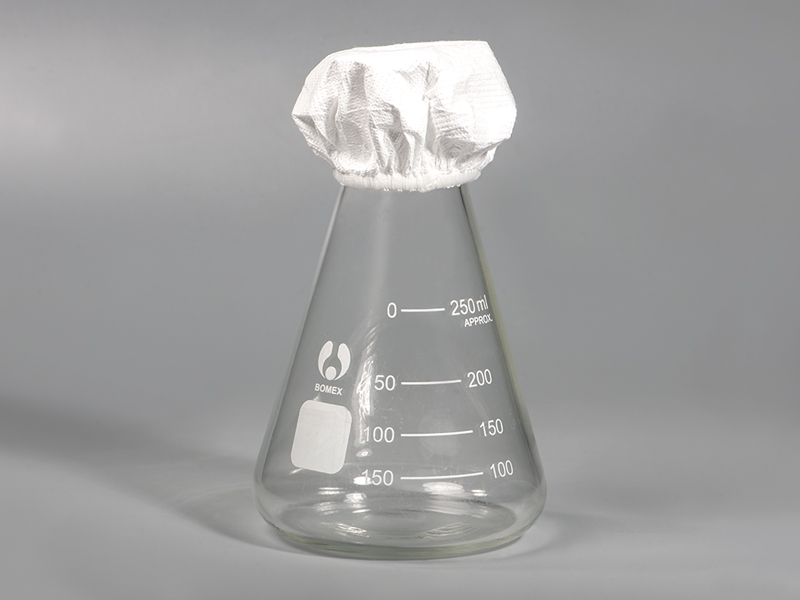
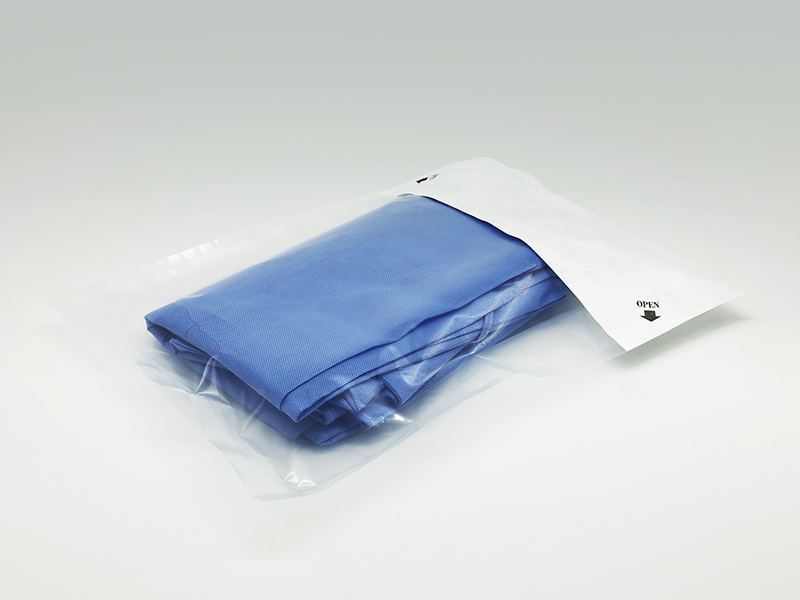




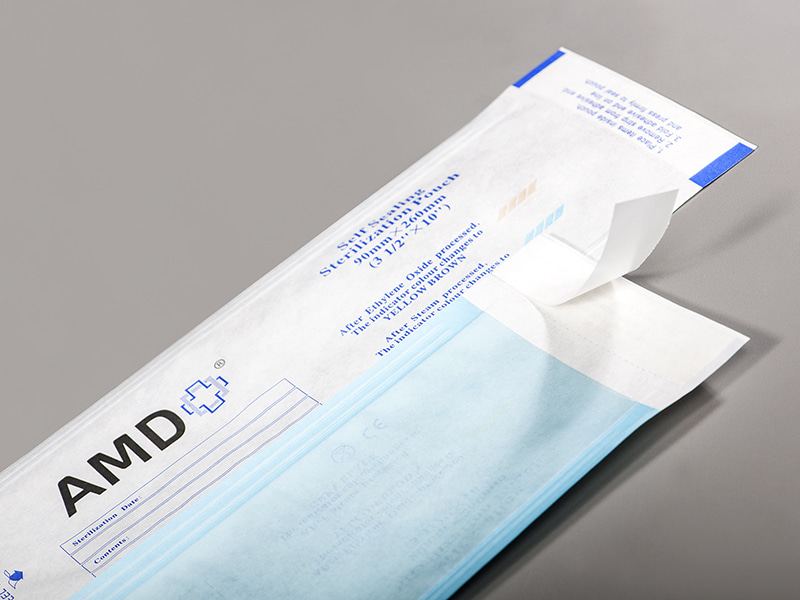

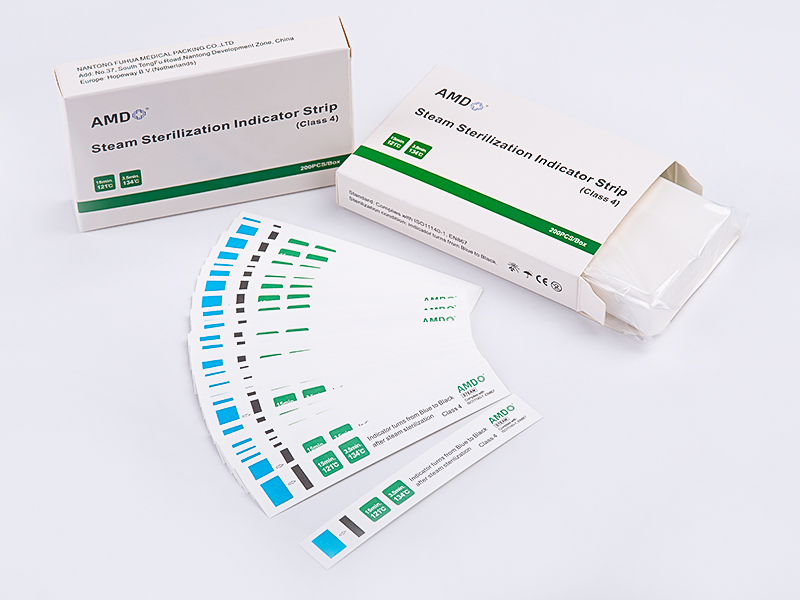
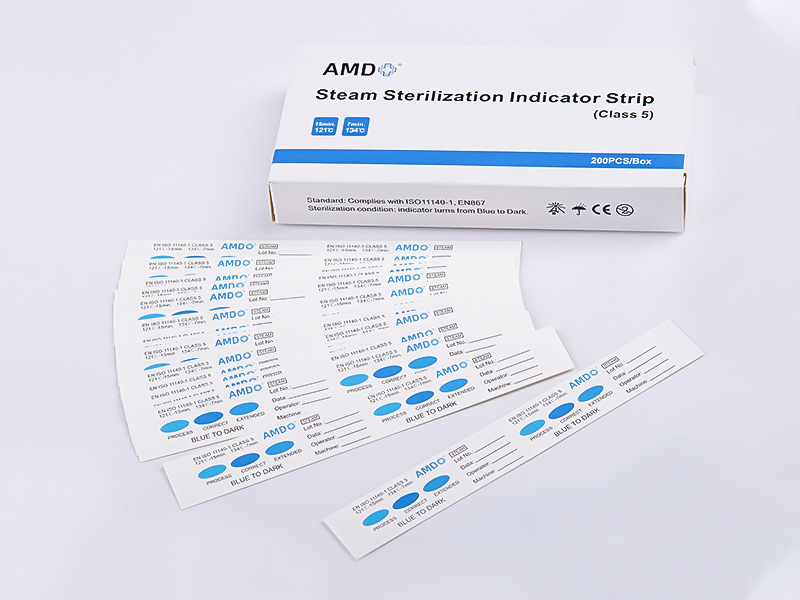

 ‘s-Gravenweg 542, 3065SG RotterdamThe Netherlands
‘s-Gravenweg 542, 3065SG RotterdamThe Netherlands
 +31 (0)10 254 28 08
+31 (0)10 254 28 08
